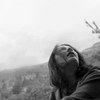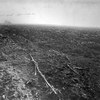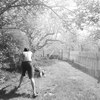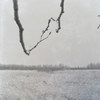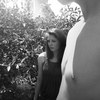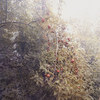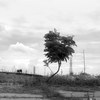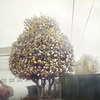Conversations about Photobooks: Raymond Meeks
MORE IMAGES
For me, it’s a privilege that I get to make this book for somebody who is drawn to my work and this form of expression, which I happen to love. None of this is a given or something I take for granted. - Raymond Meeks
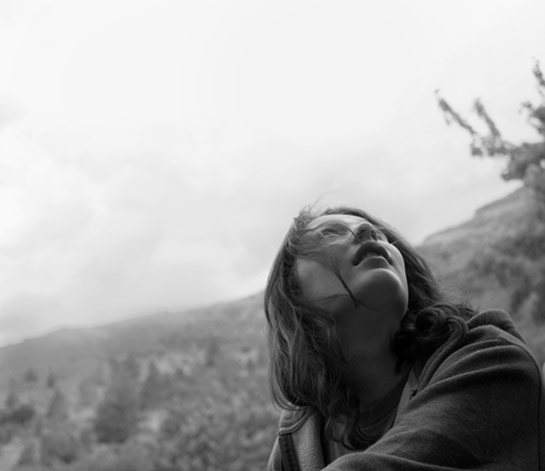
If one wants to think of photobook making as a spectrum, at one end, there are commercial publishers. At the other end, there are artists literally making their own books: Printing the pages, binding them etc. Raymond Meeks has produced a variety of such artist books, and I approached him to talk about those. (more)
Jörg Colberg: You’ve been producing artist books for a while. Can you talk a little bit about your motivations, your ideas, what are your goals?
Raymond Meeks: I have been making artist books - one of a kind, unique books - that I was selling,or providing to galleries who were selling them to collectors, people who buy unique artist books and photographs. The books often follow a loose narrative. But I wanted to expand the reach of the books. I wanted them to be more accessible, affordable, and I also wanted to expand to small editions. I was getting requests for the artist books, but they take weeks to evolve.
We were living in Montana at the time, and Alec Soth had come down to visit while he was doing his Broken Manual project, he was with a couple of filmmakers. We went out to lunch, and we were talking about the idea of a zine. That got me thinking about being able to produce a twenty to forty page book that introduces an idea, and it forms a conversation, a dialogue. It’s in no way meant to be exhaustive, or to completely flesh-out a subject or topic. It’s more poem or novella than novel. Get in, get out, don’t linger. There are no attempts to draw a conclusion within a single cover and the idea going in is to create a series of chapters over time.
In terms of the subject, I tend to be a photographer who appreciates the contents of my backyard. I believe there’s a universal story that can be told in your own surroundings without needing to necessarily travel or take on social documentary by going where these large social topics are acting out on a large scale. They can also be told using metaphor in my neighborhood, which is a place I’m familiar with and have developed an order or understanding.
We moved to Portland, OR just over two years ago. It had seemed as if my life was so expansive for many years, and all of a sudden it was contracting. We lost our home to foreclosure in Montana, my wife and I separated and are now divorced, we filed for bankruptcy - all those things happened in our lives over a very short period of time. These artist books could be cathartic; through the process of grief, the process of creation. It even, at times, felt festive and certainly, mobilizing.
The three books that I’ve done most recently, first Carousel, then Amwell | Continuum, and finally, Who Will Stay - they all feature photographs of our home in Montana as the foundation and then images of my children and our lives now. They all address time as a construct and the architecture of memory; deconstructing loss, which often leads to a level of acceptance.
It’s really meant to be an exercise. But at the same time, if the books were just an exercise, having gone through what I’ve been going through emotionally, I don’t think they’d be that interesting, I don’t think it would have any universal appeal.
When the book is complete, I hope I’ve presented a series of pictures that are generous, that express hope and a gratitude for the abundance of beauty, despite suffering and loss which are universal.
JC: How can we think of this process? When you make one of those books how do you decide about what should be in it, how it should be done, when it’s finished?
RM: The story begins small and then enlarges to an overarching narrative before reducing and editing to a manageable sequence. expansion and contraction. About Amwell: Amwell is the street I grew up on as a boy, in Columbus, OH, and I think when my marriage started to fail, I witnessed these events unfolding in my life. I felt I had somehow completed a circle that began on Amwell Street as a young boy. Some circles in life are narrow, some are broad. In this case, the circle of time amounts to thirty years. I felt like it started on that street in Ohio, and it came full circle for me. It was an emotionally tragic time in my youth. there was abuse, there was a lot of unhappiness on Amwell Street. Then we moved and my younger brothers were born and our lives changed; there was expansion.
I felt the book could touch on the things that were important at that time in terms of trying to reconstruct memory while moving forward. I incorporated family portraits, landscapes I’d visit as meditation, some of them minimal and bleak, vacant rooms in our former home in Montana. These pictures were often sequenced in repetition to reinforce the idea of an exchange, an expanded dialogue.
JC: Another aspect that fascinates me about the books you’re making is that you have a “pay what you want” price structure. The books support your work, don’t they? Can you talk about this a little bit?
RM: The idea was that the books should be accessible. The one-of-a-kind books I was doing were attractive to book collectors. The idea was that if I was going to approach a more universal subject then I wanted it to be more accessible in terms numbers and price. Then I had to structure the pricing so that I could fund the work while allowing for more democratic access. At forty dollars, we’re loosing money. But there are two other price levels which include original prints and the sales of these editions help fund the entire project. The book itself is the same throughout, it’s the same book at $40 as it is at $300.
JC: The books are completely made by you, is that right? You print them, you bind them?
RM: There will be three to five edits and mockups before I arrive at the final piece. Most recently I started taking the final draft to a bookmaker, Rory Sparks, who is a friend of mine. We constructed the architecture of the book together with letterpress and the handbinding.
The idea of the books themselves was never that they would have archival permanence. I don’t always use materials which are archival. The unique artist books I’ve made had been made with masking tapes and papers I’ve been collecting for years. The papers tend to be acid free and archival, but any of the processes can deteriorate. It’s not necessarily that I wish to impose the notion of impermanence, but in wanting to move through this time of life and given the manner in which we were loosing things which felt important, giving away more possessions, still; I felt more aligned with not obsessing over archival standards.
JC: There’s a friction in this, which I like. Photobooks are often thought of as these very expensive and special objects that ideally last forever and are collectible. But they also have value as just the objects themselves. When you say your books are not really archival they’re very precious for what they are, the way they feel, but they somehow skirt around this aspect of monetary preciousness. The idea of the object, how important is that for you, the tactile feeling, the size?
RM: The thing that’s most important about the object for me is that it have presence. I think that’s accomplished by bringing care and attention to it. And that happens in the way that I care for the book, the handling and printing of pages. My daughter, a tenth-grader now, comes to my studio after school. She’s developed a final act of kissing the title page after the stitching and tipping-in of loose prints I package all the books myself. My hands go into everything. For me, it’s a privilege that I get to make this book for somebody who is drawn to my work and this form of expression, which I happen to love. None of this is a given or something I take for granted.
I think when I receive a book that’s similarly been cared for, I know it the moment I take it from the porch and remove it from the box. You know this is something that someone has brought themselves to and they’ve cared for it. If there’s something that makes these books valuable or precious or whatever it is, I think it comes from intention.
JC: For me, that’s very important, too. I think that often gets lost when you look at even nicely made books by big publishers: They’re nice, but at the end of the day, they’re industrial products. It extends from the making to the design, when something is just following the regular pattern… It’s almost as if the book is detached from the photography, because it’s just a regular design and an industrial production. I think that’s where these artist books have so much promise, to bring the photobook as an object, to bring the experience of photography to a viewer.
RM: I resist terms like precious. I align this term with sentimental, as an emotion which is not necessarily authentic or true. It’s contrived and often imposed, superficially. At the same time, I am drawn to beauty and, for better or worse, in a more romantic sense.
In fiction and storytelling, I prefer a narrative that lays out a straight story without embellishment. I agree with you. I think there’s no substitute for intention, there’s no substitute for somebody really caring for something. I was skeptical of that personally until I started receiving emails after people received their books. They were overwhelmingly gracious. Break the books down to their spare essence and materials… it’s not the finest printing, these are laser-printed sheets of Mohawk paper. But when you care for a work, it is transmitted.
JC: You’ve also made books with Nazraeli Press, right?
RM: I published four books with Nazraeli. Chris Pichler and I have made two monographs, a one-picture book, and then they just started doing this 6x6 series of books, of which my book “amwell”, is contained.
JC: When you approach a monograph how is that different from making these artist books?
RM: It’s become pretty much the same, except that it’s printed in Hong Kong, and it is going to employ fine bookmaking materials and processes. Chris and I have similar design aesthetics, so my mock-ups and the design, which is often done with my son making the final layout, tend
to reflect how the final book will appear.
JC: How important is getting feedback on book dummies for you?
RM: It’s crucial. The last book I did, Who Will Stay… I don’t think I would have done the book without a round table of 2-3 trusted critics. One writer, a friend/photographer, and a designer. I think like many artists, in the end you don’t want to see your own hand in the final piece. Collaboration, which for me is often in the form of resistance, renews what I began and makes the work stronger, leaner and ultimately, a piece I can hopefully look at in a year or more without a cringe.
JC: Just in general, for you what makes a good photobook? If you think about your favourite photobooks what is it that you like about them?
RM: This is subjective, of course, but a book has to be tightly edited. But for me the most important thing is that it has an open-ended quality, that it doesn’t feel like you close the book, and it’s somehow resolved.
I think any book or work of art that I appreciate the most is one that calls for involvement, interaction. You have to work to understand it and you get to bring something to it each time. It’s a constant metamorphosis. The work itself, or the subject, is changing because you are changing. The way I look at a book today and the way I look at a book a year from now - if the book is good, if the book isn’t static, isn’t solved and isn’t a one-liner, then based on where you are in your life you bring something new to the narrative. And if it’s not solved, you don’t close the book and feel “OK, I understand, this is done.” Those are the books you never pull off your shelf again.
I think the monograph of the past was pretty much a repository for a body of work, an exhibition catalogue more than it was a narrative. You can go to those books and look for process or look for a photograph, but in terms of going back to it because of subject and narrative - that doesn’t happen very often.
The photobooks I’m doing myself - especially the ones I’m doing now with this new series, Orchard Journal - are more a discussion, a conversation; an investigative experiment. They’re less about a fixed topic.
JC: Thinking about photography in general I think I see that trend in photography in general, that a lot of photography is about fixed topics. It produces the books that you look at once, and then you’ve seen it, you understand, you get it, thank you.
Raymond: … and you put it away.
JC: Not that there’s anything wrong with those books, but as you said there are a lot of books on my book shelf that I like, but I’m not looking at them a lot.
RM: Yeah, there’s this dynamic quality… Those books that I return to I feel like I understand them to a level. Then I go back and I look at them, and I see pictures that I didn’t even see before. Or I swear I understood a composition and I look at it - and it’s changed. Wow, the book has changed! But of course it hasn’t. I’ve changed. One of my favourite quotes, and I’m not going to get it right, is; “beware traveler, the road is also moving”.
JC: I don’t want to get corny here, and it’s not even the right way to use this, but it’s kind of like the Greek saying about how you can never step into the same river twice. In that sense, photobooks are kind of like the river. A good book is not the same book when you open it the second time. There’s something different.
RM: Exactly. That’s exactly the way I feel about it. For a photobook, that’s very vague and esoteric, but I don’t know how else to say it. The making of a book has certainly some influence, its construction, the number of pages… But I get really tired of most 400 page books.
JC: Sometimes you just think “I wish this book was over now.” It’s like when you have a really nice meal and you’ve enjoyed your meal and it’s kind of fun to keep eating. But you know you’re overindulging yourself, and you almost end up feeling a little bit sick to your stomach, ending up wishing you hadn’t eaten that much.
Raymond: You’re paying for it, the next day! - In all my life, I’ve tried to lighten the load so to speak. An extra fifty pages is more than I want to carry around in this world.
 By
By 